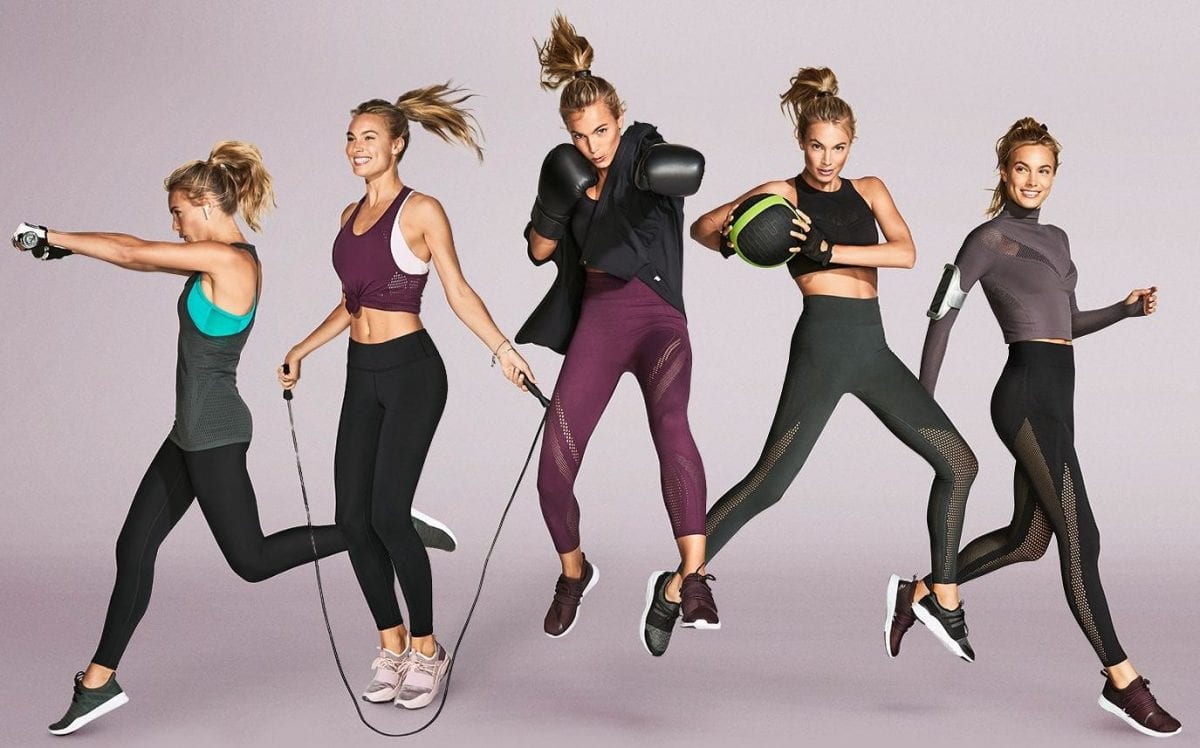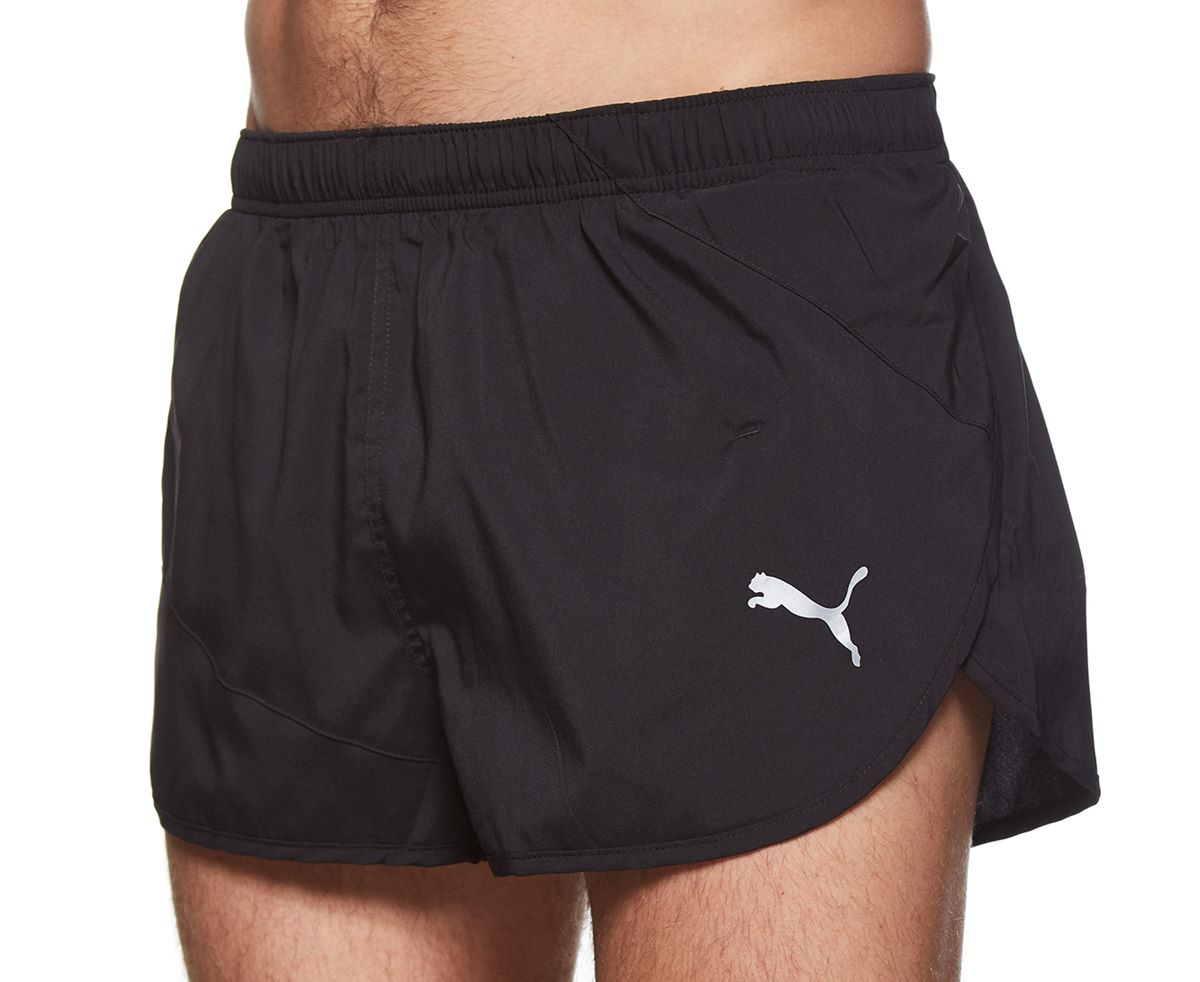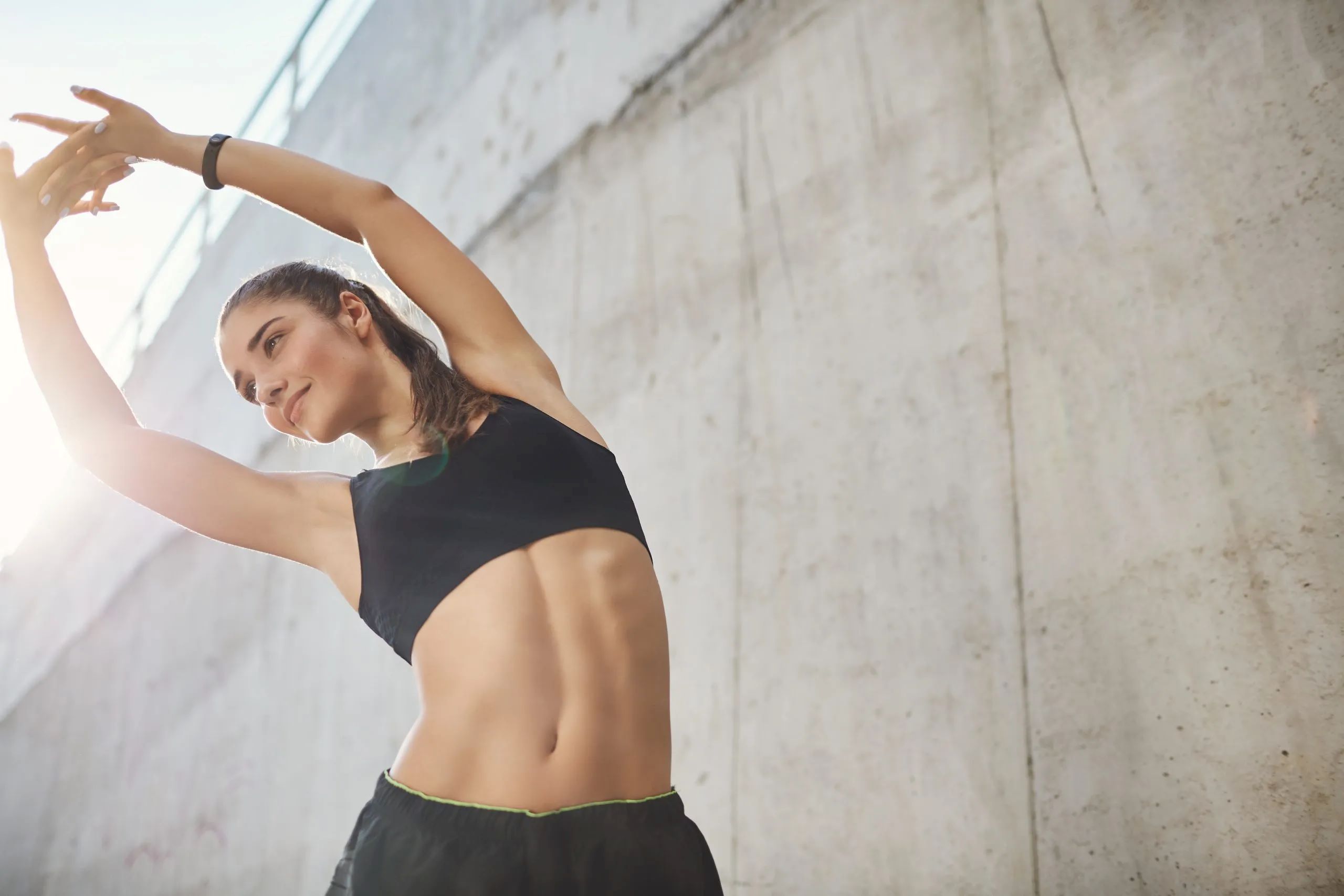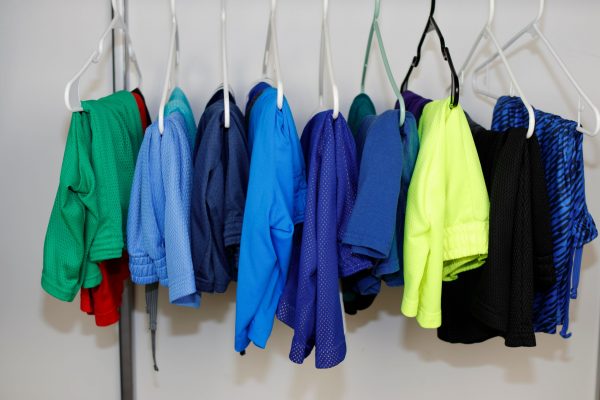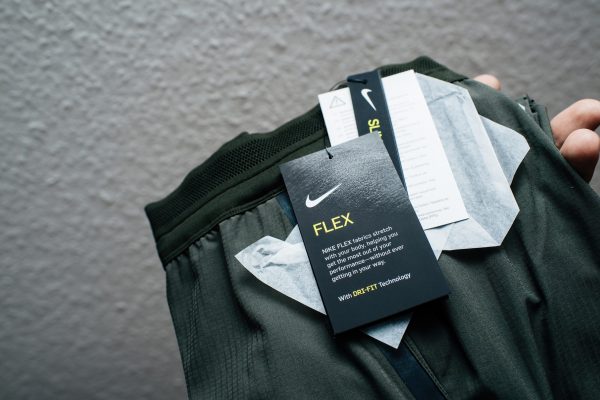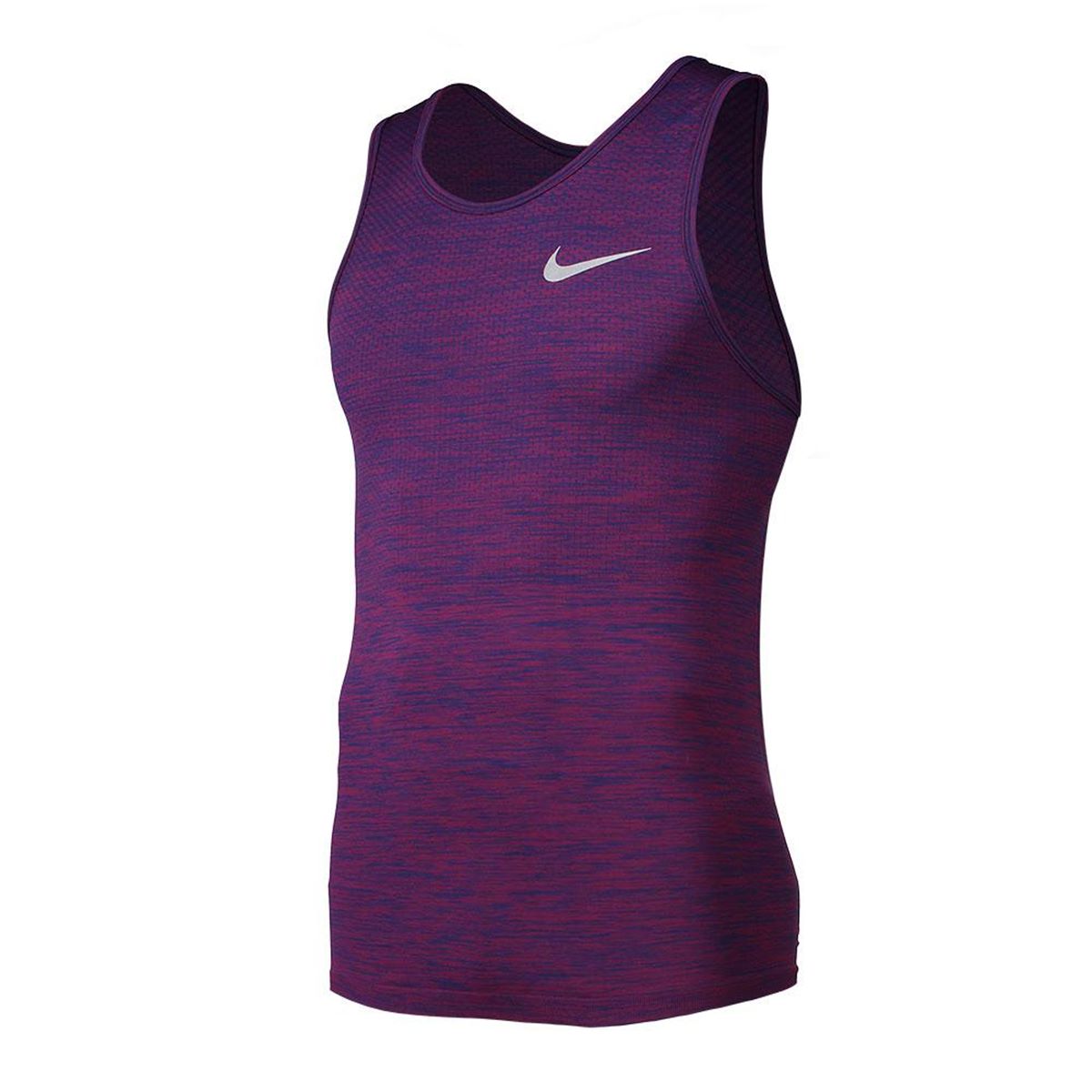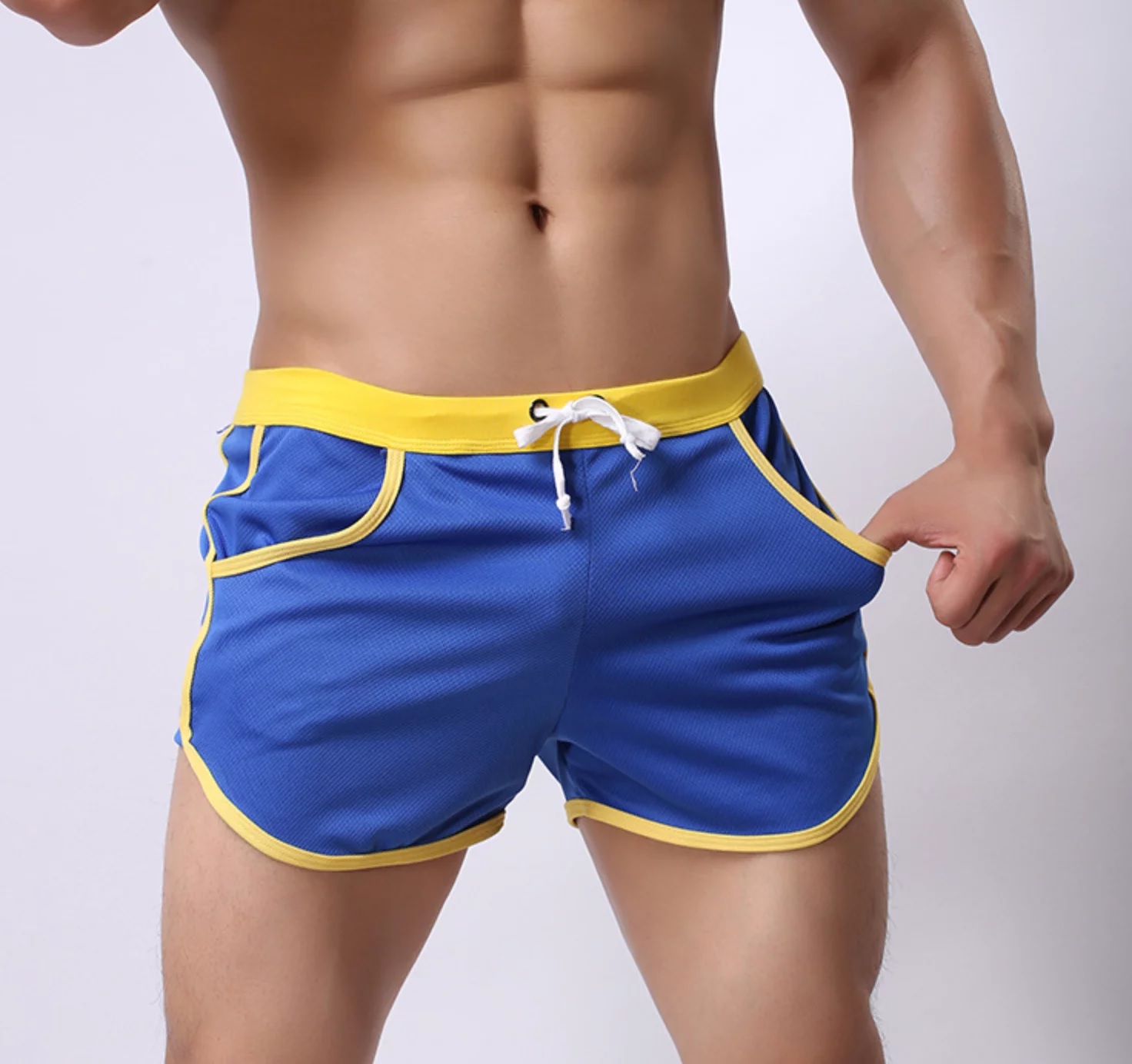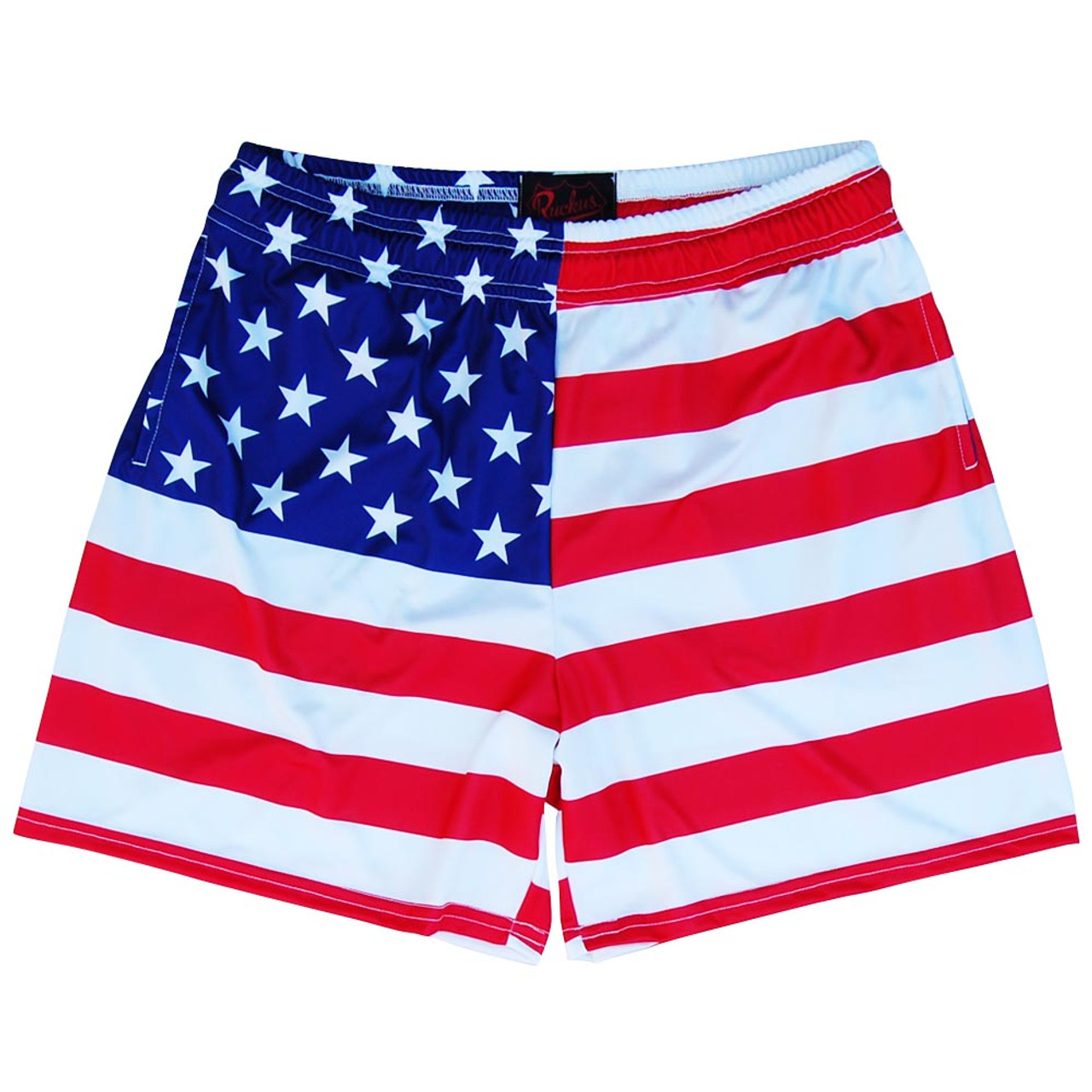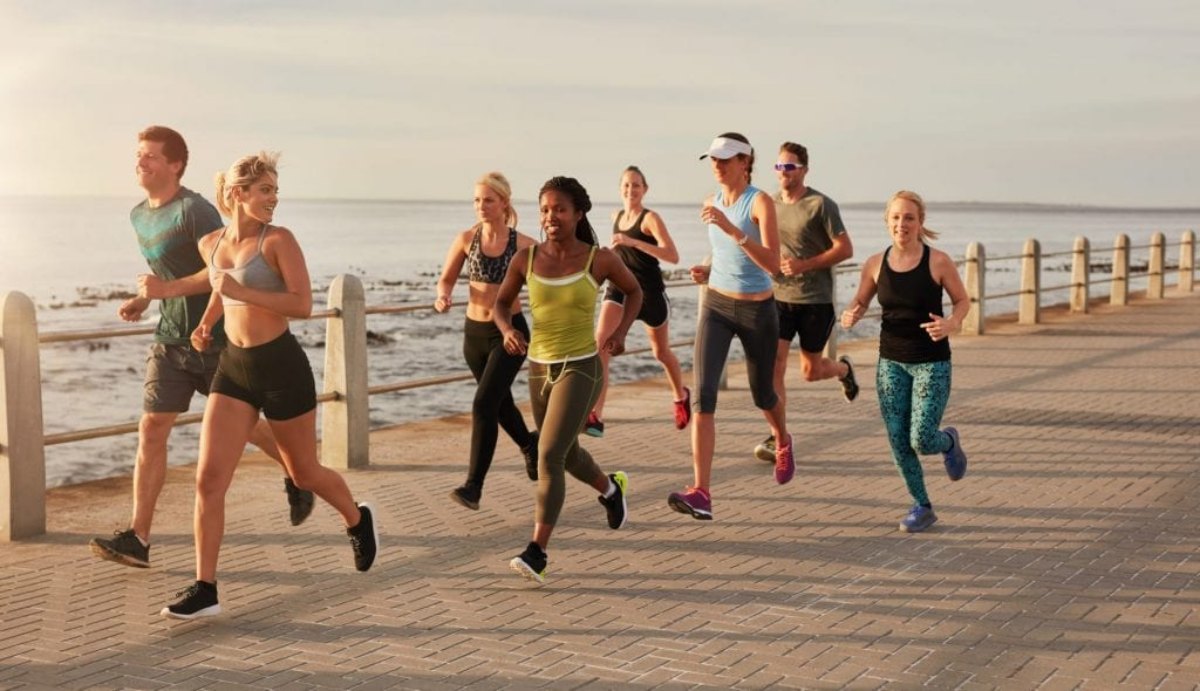

Featured
How Athletic Wear Is Made
Modified: January 2, 2024
Discover the process behind how featured athletic wear is made and the attention to detail that goes into creating high-quality performance clothing.
Introduction
Athletic wear has become incredibly popular in recent years, not only for sports and physical activities but also as a fashion statement. From activewear leggings and sports bras to performance-ready sneakers and moisture-wicking shirts, athletic wear is designed to maximize comfort, performance, and style.
This article will provide an in-depth look into the world of athletic wear, exploring its evolution, the materials used in manufacturing, the design and fabrication process, cutting and sewing techniques, quality control measures, technological advancements, and sustainable practices that have revolutionized the industry.
Whether you’re an athlete looking for high-performance gear or a fashion enthusiast seeking trendy and comfortable clothing, understanding how athletic wear is made can give you a deeper appreciation for the craftsmanship and innovation behind each garment.
So, let’s dive in and explore the fascinating journey of athletic wear production, from its humble beginnings to the cutting-edge manufacturing processes used today.
The Evolution of Athletic Wear
Athletic wear has come a long way since its inception. In the early days, athletes relied on simple, loose-fitting garments made from natural fibers like cotton. However, as sports and physical activities became more demanding, the need for specialized clothing arose.
In the late 19th century, the first sports-specific clothing emerged, catering to the unique requirements of different athletic disciplines. Swimmer’s suits made from knitted wool were introduced, allowing for better movement and reducing drag in the water. Skirts and blouses were designed for female tennis players, providing comfort and ease of movement on the court.
As the 20th century dawned, advancements in textile technology paved the way for the development of synthetic materials. Nylon and polyester became popular choices due to their durability, moisture-wicking properties, and ability to stretch. This breakthrough in material innovation revolutionized athletic wear, allowing for improved performance and comfort.
In the 1970s and 1980s, the fitness boom led to the explosion of activewear as a fashion trend. Bright colors, bold patterns, and iconic logos became synonymous with athletic wear, thanks to the rise of influential fitness icons and the emergence of fitness-themed television shows.
With the advent of performance-enhancing technologies and the influence of streetwear on fashion, athletic wear evolved further. Compression garments were introduced, providing muscle support and reducing fatigue. Breathable and moisture-wicking fabrics became commonplace, helping athletes stay cool and dry during intense workouts.
In recent years, athleisure has become a dominant force in the fashion industry. The concept combines athletic wear with casual everyday clothing, blurring the lines between sportswear and streetwear. This shift has seen the incorporation of fashionable design elements, such as cut-outs, mesh panels, and trendy patterns, into athletic wear.
Today, athletic wear is not only functional but also a style statement. It is designed to seamlessly transition from the gym or sports field to everyday life. The emphasis now lies on creating garments that are both performance-driven and aesthetically pleasing, meeting the demands of athletes and fashion-conscious individuals alike.
In summary, the evolution of athletic wear has been driven by the need for specialized garments that enhance performance and comfort. From the early days of simple cotton clothing to the present-day fusion of fashion and functionality, athletic wear continues to evolve to meet the diverse needs of athletes and consumers.
Materials Used in Athletic Wear Manufacturing
The materials used in athletic wear manufacturing play a crucial role in determining the garment’s performance, durability, and comfort. These materials are carefully chosen to meet the specific requirements of different sports and activities. Here are some commonly used materials in the production of athletic wear:
- Performance Fabrics: Performance fabrics are engineered to wick moisture away from the body, keeping athletes dry and comfortable during intense workouts. Polyester, nylon, and spandex are commonly used due to their moisture-wicking, quick-drying, and stretch properties.
- Cotton: While not as commonly used in high-performance athletic wear, cotton is still used in certain applications. It is comfortable, breathable, and provides a natural feel against the skin. However, cotton has a tendency to retain moisture, making it less suitable for intense physical activities.
- Mesh: Mesh fabrics are popular for their breathability and ventilation properties. They are often used in areas requiring enhanced airflow, such as the back, underarms, and side panels of athletic tops.
- Compression Fabrics: Compression garments are made from a blend of materials, including spandex and nylon. These fabrics apply gentle pressure to the muscles, improving blood circulation, reducing muscle vibration, and enhancing performance and recovery.
- Elastane/Spandex: Spandex, also known as elastane, is a stretchy synthetic fiber used to provide flexibility and shape retention to athletic wear. It allows for freedom of movement, ensuring a comfortable fit without restricting mobility.
- Bamboo: Bamboo fabrics are gaining popularity in sustainable athletic wear production. Bamboo is a fast-growing and renewable resource that is naturally moisture-wicking, antibacterial, and hypoallergenic. It provides a soft and breathable alternative to synthetic materials.
- Reflective Materials: Reflective materials incorporate reflective elements, allowing for increased visibility in low-light conditions. They are commonly used in activewear designed for running, cycling, and other outdoor activities.
Manufacturers continuously explore and experiment with new fabric technologies to improve the performance and comfort of athletic wear. This includes the use of fabrics with UV protection, odor-resistant properties, and temperature-regulating features.
It’s important to note that the choice of materials can vary depending on the specific requirements of different sports and activities. For example, fabrics used in athletic wear for outdoor activities may need to be water-resistant or provide insulation, while swimwear is often made from chlorine-resistant materials.
Overall, the materials used in athletic wear manufacturing play a crucial role in achieving optimal performance, comfort, and durability. Advances in fabric technology continue to push the boundaries, allowing athletes and fitness enthusiasts to perform at their best while feeling comfortable and stylish.
Design and Fabrication Process
The design and fabrication process of athletic wear involves various stages, from initial concept and prototyping to production and quality control. Each step is carefully executed to ensure that the final product meets the desired specifications. Let’s delve into the key components of the design and fabrication process:
- Design Concept: The process begins with designers creating the concept and overall vision for the athletic wear. They consider factors such as functionality, style, and target audience to develop designs that meet both performance and aesthetic requirements.
- Pattern Making: Using the design concept as a guide, patterns are created. These flat templates determine the shape and size of each garment piece and serve as a blueprint for cutting the fabric.
- Material Selection: Based on the desired functionality and style of the athletic wear, appropriate materials are selected. This includes considering factors such as breathability, stretch, moisture-wicking capabilities, and durability.
- Prototyping: Once the pattern is finalized, a prototype is created. This involves cutting the selected fabric based on the pattern and assembling the pieces. The prototype allows designers and manufacturers to evaluate the fit, functionality, and overall design of the athletic wear.
- Testing and Adjustments: The prototype is rigorously tested, considering factors such as comfort, flexibility, durability, and performance. Feedback from athletes and wear testers is collected to identify any necessary adjustments or improvements.
- Production: After finalizing the design and making any required adjustments, the production process begins. This involves cutting the fabric using the pattern templates, followed by sewing and assembling the garment pieces. Manufacturers utilize various cutting and sewing techniques to ensure precise and high-quality construction.
- Embellishments and Details: Depending on the design, additional embellishments and details may be added during the fabrication process. This can include the application of logos, prints, embroidery, or the attachment of zippers, buttons, or other fastening mechanisms.
- Quality Control: Throughout the entire fabrication process, stringent quality control measures are implemented to ensure that every garment meets the specified standards. This involves inspecting the fabric, checking stitching and construction, verifying measurements, and conducting thorough inspections before packaging.
The design and fabrication process requires collaboration between designers, pattern makers, fabric suppliers, and garment manufacturers. It is a meticulous process that combines creativity, technical expertise, and attention to detail to produce high-quality athletic wear.
By following these steps and incorporating feedback from athletes and wear testers, manufacturers can continuously improve the design and fabrication process. This leads to the creation of athletic wear that not only performs well but also meets the evolving needs and preferences of athletes and consumers.
Cutting and Sewing Techniques
The cutting and sewing techniques used in the manufacturing of athletic wear are crucial in ensuring precise construction, durability, and a comfortable fit. These techniques require skilled craftsmanship and attention to detail. Let’s explore some common cutting and sewing techniques employed in the production of athletic wear:
- Computerized Cutting: Computerized cutting machines are used to accurately cut fabric pieces based on the pattern templates. This ensures precision and consistency in garment production.
- Serging: Serging is a common sewing technique used in athletic wear manufacturing. It involves stitching the fabric edges with a serger machine to prevent fraying and provide a clean finish. This technique is particularly important when working with stretch fabrics.
- Flatlock Stitching: Flatlock stitching is often used in the construction of athletic wear, especially in activewear leggings or tops. This technique creates flat, comfortable seams that minimize irritation and improve durability.
- Overlock Stitching: Overlock stitching, also known as serging or merrow stitching, is used to sew together fabric panels. It creates a strong and flexible seam that prevents fraying and adds reinforcement to areas of high stress.
- Elastic Attachment: Elastic bands are commonly used in athletic wear to provide a secure and flexible fit. They are attached using a stretch stitch or zigzag stitch to ensure the elastic retains its stretch and shape over time.
- Bonding: Bonding is a technique used to join fabric pieces without sewing. It involves the application of heat and pressure to adhesive tape or film, which bonds the fabric layers together. Bonding provides a seamless appearance and reduces bulkiness.
- Decorative Stitching: Decorative stitching techniques, such as topstitching and coverstitching, are often used to add aesthetic appeal or reinforce seams. These stitches can be seen on the surface of the garment and can be done in contrasting colors or decorative patterns.
- Bar Tacking: Bar tacking is a technique used to reinforce areas of stress or strain, such as pocket openings or attachment points for accessories. It involves sewing a dense pattern of short stitches to reinforce the fabric layers and prevent tearing or splitting.
The choice of cutting and sewing techniques depends on factors such as fabric characteristics, desired design elements, and the intended use of the athletic wear. Manufacturers continuously explore innovative techniques to enhance garment construction and improve durability.
Skilled seamstresses and sewing machine operators are essential in executing these techniques with precision and expertise. Their attention to detail and understanding of fabric properties contribute to the overall quality and functionality of the athletic wear.
By utilizing these cutting and sewing techniques, manufacturers are able to create athletic wear that not only performs well during physical activities but also offers comfort, durability, and style to athletes and fitness enthusiasts.
Quality Control Measures
Quality control is a critical aspect of athletic wear manufacturing to ensure that every garment meets the highest standards of performance, durability, and customer satisfaction. Implementing robust quality control measures throughout the production process helps identify and rectify any potential defects or issues. Here are some common quality control measures employed in the manufacturing of athletic wear:
- Fabric Inspection: Before cutting and sewing, the fabric undergoes a thorough inspection to check for any flaws, defects, or inconsistencies. This includes examining the fabric for color accuracy, printing defects, tears, or stains that could impact the final product’s quality.
- Pattern Accuracy: Patterns are carefully checked to ensure accuracy and consistency in garment sizing and shape. This involves measuring key dimensions and conducting fit tests to ensure the patterns align with the intended design and fit specifications.
- Construction Inspection: During the sewing process, inspections are conducted at various stages to check the quality of stitching, seam alignment, and overall garment construction. This helps identify and resolve any issues before the completion of the final product.
- Fit Testing: Fit testing is conducted by using sample garments or prototypes on a range of different body types, including athletes and wear testers. This allows manufacturers to evaluate the fit, comfort, and performance of the athletic wear and make any necessary adjustments before mass production.
- Performance Testing: Athletic wear garments are often subjected to performance tests to ensure they meet the specific requirements of different sports and activities. This can include testing for moisture-wicking capabilities, stretch recovery, colorfastness, and durability under various conditions.
- Wear and Tear Testing: Garments are tested to assess their resistance to wear and tear, including testing fabric strength, elasticity, and resistance to pilling or abrasion. This helps determine the longevity and durability of the athletic wear in real-world usage scenarios.
- Colorfastness Testing: Colorfastness tests are conducted to assess how well the colors of the athletic wear hold up over time, especially when exposed to elements such as sunlight, sweat, or washing. This ensures that the colors remain vibrant and do not fade or bleed.
- Labeling and Packaging: Quality control also extends to the labeling and packaging of the athletic wear. Each garment is checked to ensure accurate labeling, including size, care instructions, and brand information. Packaging is inspected to verify that it protects the garments during transportation and maintains their quality until they reach the customer.
Implementing thorough quality control measures minimizes the risk of defective or subpar athletic wear reaching the market. It also helps build trust and confidence among athletes and consumers, knowing that they are purchasing a high-quality product that meets their expectations and performs as intended.
Manufacturers often collaborate with external quality control agencies or conduct in-house inspections to maintain consistency and uphold quality standards. Continuous improvement and feedback from athletes and consumers further drive manufacturers to refine their quality control processes and enhance the overall quality of their athletic wear.
Technological Advancements in Athletic Wear Production
The production of athletic wear has been significantly shaped and enhanced by various technological advancements. From innovative materials to cutting-edge manufacturing techniques, these advancements have revolutionized the industry and improved the performance, comfort, and durability of athletic wear. Let’s explore some key technological advancements in athletic wear production:
- Advanced Fabric Technologies: Technological advancements have led to the development of high-performance fabrics specifically designed for athletic wear. Moisture-wicking fabrics that draw sweat away from the body, temperature-regulating materials that help regulate body heat, and odor-resistant fabrics are just a few examples of how technology has improved the functionality of athletic wear and enhanced athletic performance.
- 3D Printing: 3D printing technology has made a significant impact on the design and production of athletic wear. It allows for the creation of complex and customized designs, as well as the production of lightweight and breathable components. 3D printed elements, such as shoe midsoles or parts of compression garments, can provide targeted support and enhance performance.
- Smart Fabrics: The integration of sensors, conductive fibers, and microelectronics into fabrics has given rise to the development of “smart fabrics.” These fabrics can monitor vital signs, track movement, and provide real-time feedback to athletes. Smart fabrics can be found in wearable technology such as fitness trackers, smartwatches, and even clothing that can adjust temperature or provide muscle compression on demand.
- Seamless Construction: Advancements in seamless construction techniques have eliminated the need for traditional seams in some athletic wear garments. Seamless construction provides a more comfortable fit, reduces chafing, enhances flexibility, and improves the overall aesthetic appeal of the garment.
- Heat and Thermal Management: Technological innovations have resulted in the development of fabrics and materials specifically designed for heat and thermal management. For example, phase change materials (PCMs) can absorb, store, and release heat when needed, helping regulate body temperature during intense activities. These advancements have significantly improved the comfort and performance of athletic wear garments.
- Virtual Reality (VR) and Augmented Reality (AR): VR and AR technologies are being used in the design and prototyping phases of athletic wear production. Designers can create virtual simulations of garments to visualize how they will look and fit on athletes. This allows for faster and more accurate iteration and reduces the need for physical prototypes.
- Sustainable and Eco-friendly Practices: Technological advancements have also played a crucial role in promoting sustainability in athletic wear production. Recycled materials, such as polyester made from plastic bottles, and innovative dyeing processes that reduce water consumption and chemical waste have become prevalent. Additionally, advancements in digital printing technology have minimized fabric waste and reduced environmental impact.
These technological advancements continue to push the boundaries of athletic wear production, enhancing performance, and offering innovative solutions to athletes’ needs. Manufacturers strive to embrace these advancements and integrate them into every aspect of their production processes, from design and material selection to manufacturing and sustainability practices.
As technology continues to evolve, we can expect even more exciting innovations in athletic wear production, further blurring the boundaries between fashion, technology, and performance.
Sustainability and Eco-friendly Practices in Athletic Wear Manufacturing
As environmental concerns continue to grow, the athletic wear industry has made significant strides towards adopting sustainable and eco-friendly practices in manufacturing. These practices aim to reduce the environmental impact of production processes and promote the use of materials that are renewable, recycled, or biodegradable. Let’s explore some key sustainability initiatives in athletic wear manufacturing:
- Recycled Materials: Many athletic wear brands now incorporate recycled materials into their garments. For instance, polyester fibers made from recycled plastic bottles reduce the demand for virgin materials and help divert plastic waste from landfills and oceans. These recycled materials offer similar performance qualities to traditional synthetic fabrics.
- Organic and Natural Fibers: Growing demand for eco-friendly options has led to the use of organic and natural fibers in athletic wear. Fabrics made from organic cotton, bamboo, hemp, or other sustainably sourced fibers offer breathability, comfort, and reduced chemical impact compared to conventionally grown materials.
- Eco-friendly Dyeing and Printing: Traditional dyeing and printing processes often involve harmful chemicals and excess water usage. However, advancements in technology have led to the development of eco-friendly dyeing methods, such as digital printing, which significantly reduces water consumption, chemical waste, and energy usage.
- Sustainable Manufacturing Processes: Athletic wear manufacturers are increasingly adopting eco-friendly manufacturing practices. This includes optimizing energy usage, utilizing renewable energy sources, implementing water recycling systems, and reducing overall waste generation. Factory certifications like LEED (Leadership in Energy and Environmental Design) and B Corp further demonstrate a commitment to sustainability.
- Extended Product Lifespan: Brands are increasingly focusing on durability and quality to extend the lifespan of athletic wear. By producing long-lasting garments, manufacturers help reduce waste generated from disposable and short-lived products. This includes utilizing robust stitching and construction techniques, as well as implementing repair and recycling programs.
- Sustainable Supply Chains: Brands are placing greater emphasis on transparency and responsible sourcing throughout their supply chains. This includes ensuring fair labor practices, ethical sourcing of materials, and minimizing transportation emissions through local sourcing whenever possible.
- Circular Economy Initiatives: Some brands are exploring circular economy initiatives, such as take-back programs and recycling schemes. These programs allow customers to return used athletic wear, which is then repurposed into new products or materials, reducing waste and resource consumption.
By adopting these sustainable practices, athletic wear manufacturers are working towards minimizing the industry’s environmental footprint. Consumers are increasingly demanding eco-friendly options, pushing brands to prioritize sustainability in their production processes. The efforts towards sustainability not only benefit the environment but also contribute to the longevity and reputation of the brand.
While there is still progress to be made, the shift towards sustainable and eco-friendly practices in athletic wear manufacturing is a positive step towards a more sustainable future.
Conclusion
The production of athletic wear has come a long way, driven by technological advancements, innovative materials, and a focus on sustainability. This article explored the evolution of athletic wear, from its humble beginnings to its influential presence in the fashion industry today. We delved into the materials used in manufacturing, the design and fabrication process, cutting and sewing techniques, quality control measures, and the incorporation of sustainable practices.
Athletic wear continues to evolve to meet the needs of athletes and consumers, with advancements in fabric technologies, 3D printing, smart fabrics, seamless construction, and virtual reality shaping the future of the industry. These technological innovations enhance performance, comfort, and style, while also promoting durability and minimizing environmental impact.
The adoption of sustainable and eco-friendly practices is another crucial aspect of athletic wear production. From utilizing recycled materials and organic fibers to implementing responsible manufacturing processes and embracing circular economy initiatives, brands are actively working towards reducing their environmental footprint and creating a positive social impact. Consumers are increasingly valuing sustainable options, and brands are responding by incorporating ethical and environmentally friendly practices throughout their supply chains.
By understanding the intricacies of athletic wear production, from design to finished product, we can appreciate the craftsmanship and innovation behind each garment. Knowing the materials used, the cutting and sewing techniques employed, and the quality control measures implemented helps us make informed decisions as athletes and consumers.
As the demand for athletic wear continues to grow, it is important for manufacturers and brands to prioritize performance, comfort, style, and sustainability. By striving for excellence in these areas, the athletic wear industry will continue to thrive and provide athletes and fitness enthusiasts with high-quality products that meet their evolving needs and expectations.
Let us embrace the ever-evolving world of athletic wear and celebrate the perfect blend of functionality, innovation, and style that accompanies each garment we wear on our athletic endeavors.
